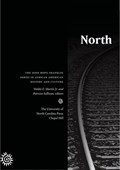Narrow Results By
Dining with Canadian Railways : Volume I - Canadian Pacific chinaware
https://archives.whyte.org/en/permalink/catalogue19845
- Medium
- Library - Book (including soft-cover and pamphlets)
- Published Date
- 2018
- Author
- Smith, Will
- Publisher
- [Nanaimo, British Columbia], Canada : David William (Will) Smith and Ralph Beaumont
- Call Number
- 08.5 Sm5d
1 website
- Author
- Smith, Will
- Responsibility
- Will Smith
- Publisher
- [Nanaimo, British Columbia], Canada : David William (Will) Smith and Ralph Beaumont
- Published Date
- 2018
- Physical Description
- [248 pages] : illustrations (some colour), map
- Subjects
- Railways
- Canadian Pacific Railway
- Canadian Pacific Railway Company
- Canadian Pacific Railway Hotels
- Restaurants
- Travel
- Canada
- Industry
- History
- History-Canada
- Hotels
- Abstract
- Pertains to the chinaware used by the Canadian Pacific Railway on affiliated trains, steamships, hotels, restaurants, airlines with focus on history and specific patterns used on ceramics
- Contents
- Introduction
- Chapter 1 - Scope and arrangement of book
- Chapter 2 - Research sources
- Chapter 3 - Railway
- Chapter 4 - Steamships
- Chapter 5 - Hotels, resorts and restaurants
- Chapter 6 - Airline
- Chapter 7 - The evolution of CPR's chinaware logos
- Chapter 8 - The scope of chinaware and its movement withing CPR's operations
- Chapter 9 - Where did al that chinaware go?
- Chapter 10 - Souvenir chinaware
- Chapter 11 - Fakes and reproductions
- Chapter 12 - Market value
- Chapter 13 - Interpreting the individual pattern listing
- Chapter 14 - Railway, steamship, hotel and restaurant patterns
- Chapter 15 - Affiliated Dominion Atlantic & Quebec Central patterns
- Chapter 16 - Airline patterns
- Appendix A - Manufacturers and their abbreviation codes
- Appendix B - Patterns by manufacturer
- Appendix C - Patterns by decade of introduction
- Appendix D - Patterns by CPR operations
- Appendix E - Hotels, resorts, bungalow camps and rest/tea houses by province
- Appendix F - Railway station restaurants by province: 1892, 1907, 1920 & 1956
- Acknowledgements
- Bibliography
- Index
- ISBN
- 9781999382100
- Accession Number
- 2019.27
- Call Number
- 08.5 Sm5d
- Collection
- Archives Library
- URL Notes
- Credit Valley Railway Company Ltd. distributes publication
Websites
This material is presented as originally created; it may contain outdated cultural descriptions and
potentially offensive content.
Read more.
Dominion : the railway and the rise of Canada
https://archives.whyte.org/en/permalink/catalogue26203
- Medium
- Library - Book (including soft-cover and pamphlets)
- Published Date
- 2023
- Author
- Bown, Stephen R.
- Publisher
- [Toronto] : Doubleday Canada
- Call Number
- 08.5 B68d
- Author
- Bown, Stephen R.
- Publisher
- [Toronto] : Doubleday Canada
- Published Date
- 2023
- Physical Description
- 400 pages, 8 unnumbered pages of plates : illustrations, maps ; 25 cm
- Abstract
- Stephen R. Bown continues to revitalize Canadian history with this thrilling account of the engineering triumph that created a nation. In The Company, his bestselling work of revisionist history, Stephen Bown told the dramatic, adventurous and bloody tale of Canada's origins in the fur trade. With Dominion he continues the nation's creation story with an equally thrilling and eye-opening account of the building of the Canadian Pacific Railway. In the late 19th century, demand for fur was in sharp decline. This could have spelled economic disaster for the venerable Hudson's Bay Company. But an idea emerged in political and business circles in Ottawa and Montreal to connect the disparate British colonies into a single entity that would stretch from the Atlantic to the Pacific. With over 3,000 kilometers of track, much of it driven through wildly inhospitable terrain, the CPR would be the longest railroad in the world and the most difficult to build. Its construction was the defining event of its era and a catalyst for powerful global forces. The times were marked by greed, hubris, blatant empire building, oppression, corruption and theft. They were good for some, hard for most, disastrous for others. The CPR enabled a new country, but it came at a terrible price. In recent years Canadian history has been given a rude awakening from the comforts of its myths. In Dominion, Stephen Bown again widens our view of the past to include the adventures and hardships of explorers and surveyors, the resistance of Indigenous peoples, and the terrific and horrific work of many thousands of labourers. His vivid portrayal of the powerful forces that were molding the world in the late 19th century provides a revelatory new picture of modern Canada's creation as an independent state."-- Provided by publisher.
- ISBN
- 9780385698726
- Accession Number
- P2023.25
- Call Number
- 08.5 B68d
- Collection
- Archives Library
This material is presented as originally created; it may contain outdated cultural descriptions and
potentially offensive content.
Read more.
Educating the body : a history of physical education in Canada
https://archives.whyte.org/en/permalink/catalogue26240
- Medium
- Library - Book (including soft-cover and pamphlets)
- Published Date
- 2024
- Author
- Hall, M. Ann, Kidd, Bruce and Vertinsky, Patricia
- Publisher
- Toronto ; Buffalo ; London : University of Toronto Press
- Call Number
- 08.1 H14e
- Publisher
- Toronto ; Buffalo ; London : University of Toronto Press
- Published Date
- 2024
- Physical Description
- xvi, 305 pages : illustrations ; 26 cm
- Abstract
- The thesis of this work sets out a history of physical education in Canada with a focus on the major advocates, innovators, and institutions that helped shaped it. This work places the historical narrative within the social, economic, and political conditions that impacted institutions, advocates, and innovators as they influenced the formulation of state physical education schooling in Canada between the Ryerson era (1803-1882) and ending with the early decades of the 21st century. The title of the work, "Educating the Body" recognizes that "the body" has its own unique vocabulary and analysis, and as such, reflects the authors' belief that physical education curriculum should ideally enable the learner to direct their own discovery of body agency (and the joy of movement) in ways that are creative, self-expressive and true to their lived body experience. As the work demonstrates, however, waves of state-directed physical education curriculum each held their own agenda about how the "ideal" child and adolescent body should be trained within the context of hegemonic paradigms of dominance and control. The work is framed around three major developments that shape the analysis: a) the significant growth of critical, social scientific research about physical education and sport during the last 50 years (through the lens of social, material, feminist, post-structuralist and queer theory); b) the tensions underlying the evolution of kinesiology and the "displacement" (p. 13) of physical education as a school subject; and c) evidence from the Final Report of the Truth and Reconciliation Commission of Canada. -- Provided by publisher.
- Contents
- Ryerson and His Vision -- Towards a Pan-Canadian Curriculum -- The Margaret Eaton School: Forty Years of Women's Physical Education -- Fit for Living -- Setting a Heroic Agenda--Realizing the Possibilities -- Changing Times and New Initiatives -- Seeking Optimism in a Contested Field.
- ISBN
- 9781487508562
- Accession Number
- P2024.02
- Call Number
- 08.1 H14e
- Collection
- Archives Library
This material is presented as originally created; it may contain outdated cultural descriptions and
potentially offensive content.
Read more.
A frontier guide to the Dewdney Trail : Hope to Rock Creek
https://archives.whyte.org/en/permalink/catalogue20166
- Medium
- Library - Book (including soft-cover and pamphlets)
- Published Date
- 1969?
- Publisher
- Calgary, Alta. : Frontier Publishing
- Edition
- Frontier Book No. 19
- Call Number
- 08.2 F92a
- Edition
- Frontier Book No. 19
- Publisher
- Calgary, Alta. : Frontier Publishing
- Published Date
- 1969?
- Physical Description
- 56 pages.
- Subjects
- Travel
- History
- History of Alberta
- Abstract
- "Highway No.3 is a ribbon of concrete that winds through some of the most dramatic scenery in Western Canada. At times it courses between valley walls lush with vegetation and history, adn at others it climbs mountain sides to meander gracefully over the top of the world. It was originally called the Dewdney Trail and it ran from Hope, through Rock Creek and on to Wild Horse Camp, 6 miles northeast of Cranbrook. Today, with a few variations of route, it follows the old trail and has become in every sense of the word the New Dewdney Trail. In this, our seventh Frontier Guide, we are attempting to trace the story adn the history of both the old trail and the new , from Hope to Rock Creek. In companion volumes, we hope to complete the trail from Rock Creek to Salmo adn from Salmo to Wild Horse."
- Notes
- Abstract taken from publication directly
- Accession Number
- 3069 a
- Call Number
- 08.2 F92a
- Collection
- Archives Library
This material is presented as originally created; it may contain outdated cultural descriptions and
potentially offensive content.
Read more.
A frontier guide to the Dewdney Trail, Rock Creek to Salmo
https://archives.whyte.org/en/permalink/catalogue20158
- Medium
- Library - Book (including soft-cover and pamphlets)
- Published Date
- 1969
- Publisher
- Calgary, Alberta : Frontier Publishing Ltd.
- Edition
- Frontier Book No. 20
- Call Number
- 08.1 F92a
- Edition
- Frontier Book No. 20
- Publisher
- Calgary, Alberta : Frontier Publishing Ltd.
- Published Date
- 1969
- Physical Description
- 48 pages illustrations 21 cm.
- Subjects
- Travel
- History
- History-Canada
- Abstract
- "In the early days of British Columbia, the land lying along the American border from Rock Creek to Salmo was almost forgotten territory. In the beginning, the fur trade followed the lines of least resistance and these led southward by valley and river to United States soil. With the discovery of gold, copper and silver in the Boundary country, a subtle struggle between American and Canadian influence developed - each striving to draw a trade from the area. Over the years, the history of the region has been woven around the struggle between the powerful American magnet of roads and railroads to draw Boundary country into its orbit and the Canadian efforts to divert this traffic into an east-west pattern. The two major weapons in the hands of the Canadians were the Dewdney Trail of 1865 and the Kettle Valley Railroad. This, our eight Frontier Guide, is the attempt to portray the development of the Boundary country in relation to the roles played by the Dewdney Trail and the fabulous Kettle Valley Line."
- Notes
- Abstract taken directly from publication
- Accession Number
- 3069 a
- Call Number
- 08.1 F92a
- Collection
- Archives Library
This material is presented as originally created; it may contain outdated cultural descriptions and
potentially offensive content.
Read more.
North of the color line : migration and Black resistance in Canada, 1870-1955
https://archives.whyte.org/en/permalink/catalogue25244
- Medium
- Library - Book (including soft-cover and pamphlets)
- Author
- Mathieu, Sarah-Jane
- Publisher
- Chapel Hill : University of North Carolina Press
- Call Number
- 08.1 M42n
1 website
- Author
- Mathieu, Sarah-Jane
- Responsibility
- Sarah-Jane Mathieu
- Publisher
- Chapel Hill : University of North Carolina Press
- Physical Description
- xv, 280 pages : illustrations, maps, photographs
- Abstract
- North of the Color Line examines life in Canada for the estimated 5,000 blacks, both African Americans and West Indians, who immigrated to Canada after the end of Reconstruction in the United States. Through the experiences of black railway workers and their union, the Order of Sleeping Car Porters, Sarah-Jane Mathieu connects social, political, labor, immigration, and black diaspora history during the Jim Crow era. By World War I, sleeping car portering had become the exclusive province of black men. White railwaymen protested the presence of the black workers and insisted on a segregated workforce. Using the firsthand accounts of former sleeping car porters, Mathieu shows that porters often found themselves leading racial uplift organizations, galvanizing their communities, and becoming the bedrock of civil rights activism. Examining the spread of segregation laws and practices in Canada, whose citizens often imagined themselves as devoid of racism, Mathieu historicizes Canadian racial attitudes, and explores how black migrants brought their own sensibilities about race to Canada, participating in and changing political discourse there. (From publisher's website)
- Contents
- Introduction. Birth of a nation: race, empire, and nationalism during Canada's railway age -- Drawing the line: race and Canadian immigration policy -- Jim Crow rides this train: segregation in the Canadian workforce -- Fighting the empire: race, war, and mobilization -- Building an empire, uplifting a race: race, uplift, and transnational alliances -- Bonds of steel: depression, war, and international brotherhood.
- ISBN
- 9780807871669
- Accession Number
- P2020.07
- Call Number
- 08.1 M42n
- Collection
- Archives Library
- URL Notes
- Publisher's website
Websites
This material is presented as originally created; it may contain outdated cultural descriptions and
potentially offensive content.
Read more.
The rebirth of Canada's Indians
https://archives.whyte.org/en/permalink/catalogue25275
- Medium
- Library - Book (including soft-cover and pamphlets)
- Published Date
- 1977
- Author
- Cardinal, Harold
- Publisher
- Edmonton : Hurtig Publishers
- Call Number
- 07.2 C11t
1 website
- Author
- Cardinal, Harold
- Responsibility
- Harold Cardinal
- Publisher
- Edmonton : Hurtig Publishers
- Published Date
- 1977
- Physical Description
- 222 pages
- Abstract
- The story of the Indian peoples' fight for justice through the tunnels and mazes of bureaucracy. An affirmation of the Indian way of life, of the Indian religion, and a demand for acceptance of the Alberta proposal for a new Indian Act. Chapters cover the Indian Act, Indian organization, education, economic development and aboriginal rights. (from LAC entry)
- Contents
- A Canadian - what the hell it's all about
- Make love not war - the changing role of Indian organizations
- Organize or else - it's not enough to find a bad guy
- The politics of poverty - how to survive in the democratic system
- Economic development I - without all the crap and mythology
- Economic development II - some of teh nitty is pretty gritty
- Education I - with our heads in the clouds
- Education II - always the prime topic
- Education III - strangers in the classroom
- Education IV - the need for legislation and funding
- The Indian Act I - government by a bunch of bureaucrats, or Her Majesty pulled a fast one
- The Indian Act II - moose meat beats bologna
- The Indian Act III - time to get down to specifics
- The Indian Act IV - to serve the people, not the government
- The Indian Act V - the only good indian is a sleeping indian
- Aboriginal rights - from a philosophical, religious viewpoint
- The Treaties - the Queen's forked tongue
- The claims - our children won't wait
- Indian organization I - they breathe the same air; they drink the same water
- Indian organizations II - we forgot to scalp the general
- Indian organizations III - the war continues - Chretien rises from the dead
- Integration and alienation - education and our childres
- Earmarked for Indian education - raindrops kept falling on their heads
- The education ferment - Cold Lake stands firm
- A hell of a mess - no problem is insoluable
- Wood, grass, stone - despair and rebirth
- ISBN
- 0888301251
- Accession Number
- P2020.07
- Call Number
- 07.2 C11t
- Collection
- Archives Library
- URL Notes
- Author information
Websites
This material is presented as originally created; it may contain outdated cultural descriptions and
potentially offensive content.
Read more.
Thumbing a ride : hitchhikers, hostels, and counterculture in Canada
https://archives.whyte.org/en/permalink/catalogue24955
- Medium
- Library - Book (including soft-cover and pamphlets)
- Published Date
- 2018
- Author
- Mahood, Linda
- Publisher
- Vancouver ; Toronto : UBC Press
- Call Number
- 02.4 M11th
1 website
- Author
- Mahood, Linda
- Responsibility
- Linda Mahood
- Publisher
- Vancouver ; Toronto : UBC Press
- Published Date
- 2018
- Physical Description
- Description:xii, 331 pages : illustrations, portraits
- Abstract
- In the 1920s, as a national network of roads and youth hostels spread across Canada, so did the practice of hitchhiking. By the 1960s, the Trans-Canada Highway had become the main thoroughfare for thousands of young baby boomers seeking adventure. Thumbing a Ride examines the rise and fall of hitchhiking in the 1970s, drawing on records from the time. The Trudeau Liberals responded to youth unemployment by subsidizing a network of hostels to make travel an educational adventure, and many equated hitching and hostelling with the freedom to do their own thing. At the same time, a counter-narrative emerged, of girls gone missing and other dangers. Town councillors, community groups, and motorists called for a nationwide clampdown on a transient youth movement that they believed was spreading hippie sensibilities and anti-establishment nomadism. Hitchhiking is a ritual that requires trust, boundary negotiation, and control. Neither the identity of the hitchhiker nor the motives of the motorist can be determined in advance. Linda Mahood unearths good and bad stories and key biographical moments that formed young travellers’ understandings of personal risk, agency, and national identity. Thumbing a Ride asks new questions about hitchhiking as a rite of passage, and about adult interventions that turned a subculture into a pressing moral and social issue. This book will appeal to students and scholars of history, sociology, and social policy. It will also find an appreciative audience among baby boomers who recall the transient youth movement. (from publisher's website)
- Contents
- List of Illustrations
- Acknowledgements
- Get your Motor Running: Risk, Ritual, and Rite of Passage Travel
- Thumb Wars: Adventure Hitchhiking
- Rucksack Revolution: Quest in the Age of Aquarius
- Cool Aid: The Transient Youth Movement
- Crash Pads: Blue-Jean Bureaucrats versus the Canadian Youth Hostels Association
- Head Out on the Highway: Stories from the Trans-Canada Highway
- Car Sick: Hitchhiking Dos and Don'ts
- Conclusion: The Vanishing Hitchhiker Eulogy
- Notes
- Index
- ISBN
- 978077483733
- Accession Number
- P2019-30
- Call Number
- 02.4 M11th
- Collection
- Archives Library
- URL Notes
- Publisher's website
Websites
This material is presented as originally created; it may contain outdated cultural descriptions and
potentially offensive content.
Read more.
Castle in the wilderness : the story of the Banff Springs Hotel
https://archives.whyte.org/en/permalink/catalogue24950
- Medium
- Library - Book (including soft-cover and pamphlets)
- Published Date
- 2019
- Author
- Robinson, Bart
- Publisher
- Banff, AB : Summerthought Publishing
- Edition
- 1st Edition
- Call Number
- 08.5 R55c
1 website
- Author
- Robinson, Bart
- Responsibility
- Bart Robinson
- Edition
- 1st Edition
- Publisher
- Banff, AB : Summerthought Publishing
- Published Date
- 2019
- Physical Description
- 160 p.; illus.
- Subjects
- Hotels
- History
- Travel
- Tourism
- Banff Springs Hotel
- Canadian Pacific Railway
- Canadian Pacific Railway Company
- Canadian Pacific Railway Hotels
- Abstract
- A Castle in the Wilderness: The Story of the Banff Springs Hotel is the definitive historical record of one of the world’s most famous mountain resorts. The story navigates the hotel’s early history from its construction by the Canadian Pacific Railway to the glittering era of the 1920s through to the changes of modern times. Local author and historian Bart Robinson has been exploring and writing about the Banff Springs Hotel since the 1970s. In A Castle in the Wilderness he combines a complete hotel history with rich anecdotes and snippets of the past that have enriched Banff and indeed Canada, from the hotel’s links to the construction of the transcontinental rail line to the visits of maharajahs and movie stars.How did such a gracious hotel come to be in the wilds of the Canadian Rockies? How much did it cost to build? Who designed it? Who selected its furnishings? Which famous visitors has it hosted? And why is now known as the Fairmont Banff Springs? These and many more questions are answered in the Castle in the Wilderness. (from publisher's website)
- Contents
- Introduction
- Origins of a Hotel
- Grand Designs
- Vistas and Vendettas
- Growing Pains
- Towers and Troubles
- Princes and Politicians
- Out of the Fire
- A Brief But Golden Moment
- Tribulations and Triumph
- A Second Century
- Into the New Millenium
- Appendix
- Bibliography
- Index
- Credits
- Acknowledgements
- About the Author
- ISBN
- 9781926983356
- Accession Number
- 2019.89
- Call Number
- 08.5 R55c
- Collection
- Archives Library
- URL Notes
- Link to publishers website where publication can been purchased
Websites
This material is presented as originally created; it may contain outdated cultural descriptions and
potentially offensive content.
Read more.
Connecting the Kootenays : the Kootenay Lake ferries, a hundred years of service 1921-2020
https://archives.whyte.org/en/permalink/catalogue25567
- Medium
- Library - Book (including soft-cover and pamphlets)
- Published Date
- January 2022
- Author
- Cone, Michael A.
- Publisher
- Nelson, British Columbia : Michael A. Cone
- Call Number
- 08.5 C75c
- Author
- Cone, Michael A.
- Publisher
- Nelson, British Columbia : Michael A. Cone
- Published Date
- January 2022
- Physical Description
- 354 pages
- Abstract
- Connecting the Kootenays chronicles the history of the Kootenay Lake ferry service from its modest beginnings in 1921 through to its 100th anniversary in 2020. -- From back cover
- Contents
- The Great Trunk Road (1908-1921) ; The Canadian Pacific Railway Fills the Gap (1884-1913) ; The Nasookin: Queen of Kootenay Lake (1913-1930) ; Nelson to Kuskanook: A Trip to Remember (1921-1930) ; The Provinical Government Steps In (1931) ; The Great Depression and the Second World War (1931-1947) ; Saying Goodbye to the Nasookin (1947-1956) ; A New Ferry and a New Route (1947-1954) ; The Auxiliary Ferry: The Balfour (1954) ; Growing Pains for the Two-Ferry Service and the Opening of the "Skyway" (1955-1963) ; Labour Strife, Major Rebuilds and Looking beyond the New Millennium (1964-1999) ; The Osprey 2000, Privitization and Facing Challenges Ahead (2000-2020)
- ISBN
- 9781778350511
- Accession Number
- P2022.12
- Call Number
- 08.5 C75c
- Collection
- Archives Library
This material is presented as originally created; it may contain outdated cultural descriptions and
potentially offensive content.
Read more.








